Same Day or Next Day Appointments Available Laredo (956) 726-9797 Se Habla Español
Same Day or Next Day Appointments Available Laredo (956) 726-9797 Se Habla Español
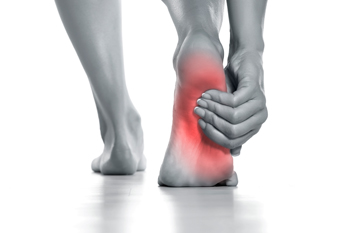
Foot pain in women can develop from a variety of unique factors. Wearing high heels often places the foot in an unnatural position, creating strain on the toes and forefoot. Pregnancy and hormonal changes can cause swelling, ligament laxity, and arch problems. Conditions such as osteoporosis increase the risk of fractures, while bunions and rheumatoid arthritis may cause chronic pain and deformity. These issues not only affect mobility, but also overall quality of life. A podiatrist can provide specialized care, from footwear advice to customized treatments. If you have foot pain, it is suggested that you promptly consult a podiatrist who can offer effective relief and treatment solutions.
Foot Pain
Foot pain can be extremely painful and debilitating. If you have a foot pain, consult with Jed Wells, DPM from Jed Wells, DPM Foot Specialist. Our doctor will assess your condition and provide you with quality foot and ankle treatment.
Causes
Foot pain is a very broad condition that could be caused by one or more ailments. The most common include:
Diagnosis
To figure out the cause of foot pain, podiatrists utilize several different methods. This can range from simple visual inspections and sensation tests to X-rays and MRI scans. Prior medical history, family medical history, and any recent physical traumatic events will all be taken into consideration for a proper diagnosis.
Treatment
Treatment depends upon the cause of the foot pain. Whether it is resting, staying off the foot, or having surgery; podiatrists have a number of treatment options available for foot pain.
If you have any questions, please feel free to contact our offices located in Corpus Christi, and Laredo, TX . We offer the newest diagnostic and treatment technologies for all your foot care needs.
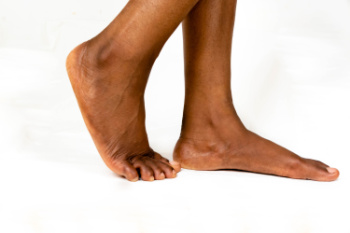
Flat feet, also known as pes planus, occur when the medial longitudinal arch of the foot is flattened, causing the sole to make full or nearly full contact with the ground. There are different types of flat feet. Flexible flat feet are common and often appear in childhood, with the arch visible when the foot is off the ground but disappearing during weight-bearing. Rigid flat feet, on the other hand, remain flat whether standing or not and can be associated with structural problems in the bones or joints. Flat feet may be congenital, meaning present at birth, or acquired later in life due to tendon dysfunction, arthritis, or injury. In some cases, obesity, aging, or pregnancy can contribute to arch collapse. A podiatrist can assess the type of flat foot through physical examination and imaging, and determine whether treatment or surgery is necessary. If having flat feet disrupts your daily activities, it is suggested that you make an appointment with a podiatrist for an exam, diagnosis, and appropriate treatment.
Flatfoot is a condition many people suffer from. If you have flat feet, contact Jed Wells, DPM from Jed Wells, DPM Foot Specialist. Our doctor will treat your foot and ankle needs.
What Are Flat Feet?
Flatfoot is a condition in which the arch of the foot is depressed and the sole of the foot is almost completely in contact with the ground. About 20-30% of the population generally has flat feet because their arches never formed during growth.
Conditions & Problems:
Having flat feet makes it difficult to run or walk because of the stress placed on the ankles.
Alignment – The general alignment of your legs can be disrupted, because the ankles move inward which can cause major discomfort.
Knees – If you have complications with your knees, flat feet can be a contributor to arthritis in that area.
Symptoms
Treatment
If you are experiencing pain and stress on the foot you may weaken the posterior tibial tendon, which runs around the inside of the ankle.
If you have any questions, please feel free to contact our offices located in Corpus Christi, and Laredo, TX . We offer the newest diagnostic and treatment technologies for all your foot care needs.
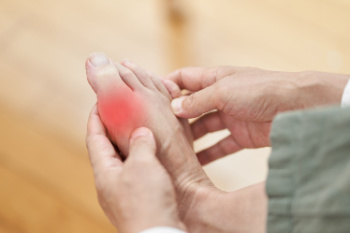
Gout is a form of arthritis that commonly affects the feet, especially the big toe joint, and develops when uric acid crystals build up around a joint. The earliest stage of gout, called asymptomatic hyperuricemia, involves crystal deposits without pain. The second stage, acute intermittent gout, is when sudden attacks occur, often at night or early in the morning. These episodes cause severe pain, redness, swelling, and warmth in the affected toe, ankle, or foot joint. It sometimes makes it difficult to walk or even touch the area. If gout is not properly managed, it can progress to chronic tophaceous gout, where hard deposits, known as tophi, form under the skin or within joints. This advanced stage can cause ongoing pain, deformity, stiffness, and limited mobility in the toes, feet, or ankles. If you are experiencing foot pain related to gout, it is suggested that you make an appointment with a podiatrist for a diagnosis and ongoing help managing this painful condition.
Gout is a foot condition that requires certain treatment and care. If you are seeking treatment, contact Jed Wells, DPM from Jed Wells, DPM Foot Specialist. Our doctor will treat your foot and ankle needs.
What Is Gout?
Gout is a type of arthritis caused by a buildup of uric acid in the bloodstream. It often develops in the foot, especially the big toe area, although it can manifest in other parts of the body as well. Gout can make walking and standing very painful and is especially common in diabetics and the obese.
People typically get gout because of a poor diet. Genetic predisposition is also a factor. The children of parents who have had gout frequently have a chance of developing it themselves.
Gout can easily be identified by redness and inflammation of the big toe and the surrounding areas of the foot. Other symptoms include extreme fatigue, joint pain, and running high fevers. Sometimes corticosteroid drugs can be prescribed to treat gout, but the best way to combat this disease is to get more exercise and eat a better diet.
If you have any questions, please feel free to contact our offices located in Corpus Christi, and Laredo, TX . We offer the newest diagnostic and treatment technologies for all your foot care needs.
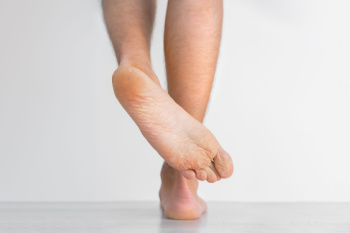
Athlete’s foot is a stubborn fungal infection that affects the skin on the feet, especially between the toes. It is caused by fungi that thrive in warm, moist environments, such as sweaty socks, shoes, or public places like locker rooms and around swimming pools. Symptoms include itching, burning, redness, peeling skin, and sometimes blisters or cracking, which can cause discomfort and make walking painful. Athlete’s foot often recurs because the fungi are difficult to completely eliminate and can survive in shoes, socks, or on skin, especially if moisture and warmth persist. Poor foot hygiene, wearing tight shoes, or not fully treating the infection also contribute to recurrence. A podiatrist can diagnose athlete’s foot by examining the affected skin and samples may be taken to confirm the fungal infection. Treatment includes antifungal creams, powders, and advice on proper foot care and hygiene to prevent reinfection. If you have athlete's foot that keeps recurring, it is suggested that you schedule an appointment with a podiatrist. for effective treatment solutions, which may include prescribed medication.
Athlete’s foot is an inconvenient condition that can be easily reduced with the proper treatment. If you have any concerns about your feet and ankles, contact Jed Wells, DPM from Jed Wells, DPM Foot Specialist. Our doctor will treat your foot and ankle needs.
Athlete’s Foot: The Sole Story
Athlete's foot, also known as tinea pedis, can be an extremely contagious foot infection. It is commonly contracted in public changing areas and bathrooms, dormitory style living quarters, around locker rooms and public swimming pools, or anywhere your feet often come into contact with other people.
Solutions to Combat Athlete’s Foot
Athlete’s foot can cause many irritating symptoms such as dry and flaking skin, itching, and redness. Some more severe symptoms can include bleeding and cracked skin, intense itching and burning, and even pain when walking. In the worst cases, Athlete’s foot can cause blistering as well. Speak to your podiatrist for a better understanding of the different causes of Athlete’s foot, as well as help in determining which treatment options are best for you.
If you have any questions please feel free to contact our offices located in Corpus Christi, and Laredo, TX . We offer the newest diagnostic and treatment technologies for all your foot and ankle needs.
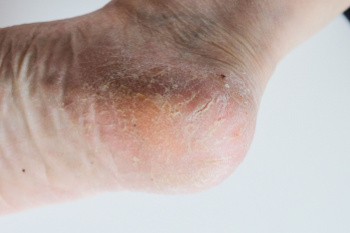
Heel fissures, often called cracked heels, occur when the skin surrounding the heel becomes dry, thickened, and splits open. They are not only uncomfortable but can also become painful and prone to infection, if left untreated. People who stand for long hours of time, wear open-backed shoes, or live in dry climates are more likely to develop them. Seniors, individuals with diabetes, and those with skin conditions such as eczema or psoriasis, are also at greater risk. Treatment begins with softening the skin through regular moisturizing and gentle exfoliation. Thick emollients or heel balms can help seal in moisture and protect the skin. Wearing supportive shoes with a closed back reduces pressure and prevents further cracking. If you have severe heel fissures, it is suggested that you see a podiatrist who may remove thickened skin or provide specialized treatments before complications develop.
Cracked heels are unsightly and can cause further damage to your shoes and feet. If you have any concerns, contact Jed Wells, DPM from Jed Wells, DPM Foot Specialist. Our doctor can provide the care you need to keep you pain-free and on your feet.
Cracked Heels
Cracked heels appear unappealing and can make it harder for you walk around in sandals. Aside from looking unpleasant, cracked heels can also tear stockings, socks, and wear out your shoes. There are several methods to help restore a cracked heel and prevent further damage.
How Do You Get Them?
Dry skin is the number one culprit in creating cracked heels. Many athletes, walkers, joggers, and even swimmers suffer from cracked heels. Age and skin oil production play a role to getting cracked heels as well.
Promote Healing
Over the counter medicines can help, especially for those that need instant relief or who suffer from chronic dry feet.
Wear Socks – Wearing socks with medicated creams helps lock in moisture.
Moisturizers – Applying both day and night will help alleviate dryness which causes cracking.
Pumice Stones – These exfoliate and remove dead skin, which allows for smoother moisturizer application and better absorption into the skin.
Change in Diet
Eating healthy with a well-balanced diet will give the skin a fresh and radiant look. Your body responds to the kinds of food you ingest. Omega-3 fatty acids and zinc supplements can also revitalize skin tissue.
Most importantly, seek professional help if unsure how to proceed in treating cracked heels. A podiatrist will help you with any questions or information needed.
If you have any questions, please feel free to contact our offices located in Corpus Christi, and Laredo, TX . We offer the newest diagnostic and treatment technologies for all your foot care needs.







